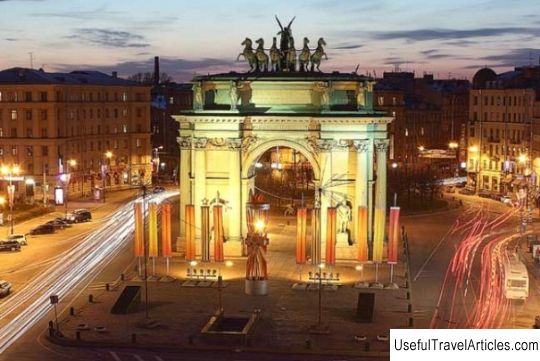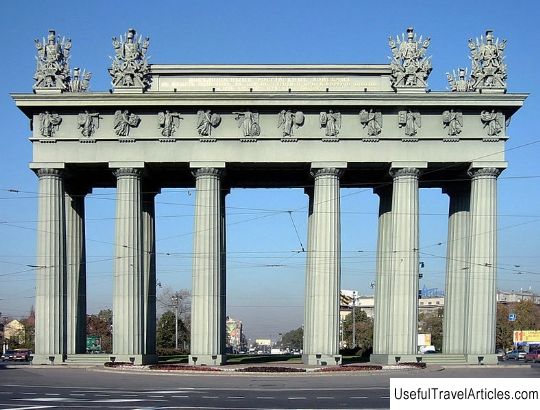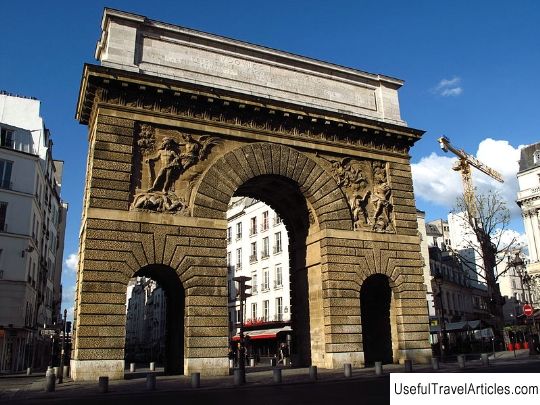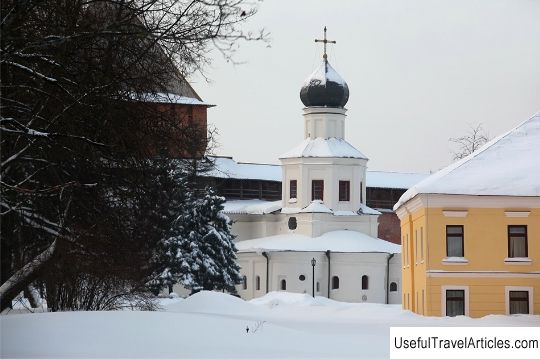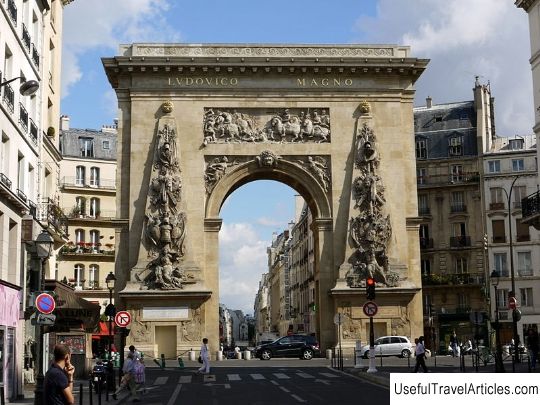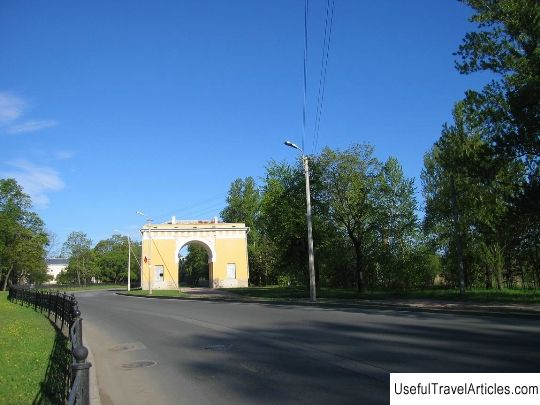Narva Triumphal Gates description and photos - Russia - Saint Petersburg: Saint Petersburg
Rating: 8,0/10 (524 votes) Narva Triumphal Gates description and photos - Russia - St. Petersburg: St. Petersburg. Detailed information about the attraction. Description, photos and a map showing the nearest significant objects. Photo and descriptionIn St. Petersburg there are many monuments dedicated to the victories of the Russian army. The Narva Triumphal Gates, which were built in honor of the victory in the Patriotic War of 1812, are especially impressive. They are a monument of architecture in the Empire style. They are located on Stachek Square near the Narvskaya metro station. The first gate was built of wood and alabaster at the end of July 1814. The idea belongs to the famous architect Giacomo Quarenghi. And already on July 30, victorious soldiers who were returning from Europe passed through them in a solemn atmosphere. The gates were installed behind the Obvodny Canal, at the very beginning of the Peterhof highway, which turns into the road to Narva, and therefore the local population began to call the gates Narva. After 10 years, the gates were badly dilapidated, and Emperor Alexander I issued a decree on the construction of new gates from a more durable material on the bank of the Tarakanovka River (later filled up), slightly south of the former place. The project was taken over by the architect Vasily Petrovich Stasov. In general, he kept Quarenghi's plan and at the end of August 1827, on the anniversary of the Battle of Borodino, the first stone was laid. The peculiarity of the project of the new Narva Gate was that the structure was made of bricks sheathed with copper sheets. A sculptural ensemble was also formed from copper sheets: the six horses (sculptor Pyotr Karlovich Klodt) and the figure of Glory (sculptor Stepan Stepanovich Pimenov). Art critics noted that the sculpture of the Narva Gate is characterized by severity and simplicity, there is no allegorical complication images that distinguish the monumental and decorative works of this time. The new gate was opened in mid-August 1834. Their height is 23 meters, together with the Victory sculpture - over 30 meters, total width - 28 meters. In the niches between the columns of the Corinthian order, you can see 2 statues of ancient Russian knights, made according to the models of Pimenov and Demut-Malinovsky. The entire sculpture is made of wrought copper. In the center of the attic, on both facades, there is an inscription in gold letters: “Victorious Russian Imperial Guard. A grateful fatherland in August 17, 1834 ". Below is the same inscription in Latin. Architect Stasov in the inner premises of the gate thought to create a memorial museum, which would keep authentic things and documents telling about the war with Napoleon's army. These plans were not destined to come true. The inner space was used as a barracks for the soldiers of the Narva Outpost, who controlled the entry and exit of people from the city. A guard officer and the future famous painter Pavel Andreevich Fedotov served here. Copper, spectacular at first, some time after its discovery in the situation of the St. Petersburg climate, underwent corrosion. By the end of the 19th century, the gate was restored, replacing the copper sheets with iron ones, but this only intensified the corrosion. On January 9, 1905, the Narva Gate witnessed an unfortunate event in the history of Russia - Bloody Sunday. Here, some of the participants in the peaceful demonstration were shot. And for this reason, after the October events of 1917, Narva Square, in the center of which the gates were installed, will be called Stachek Square. In 1925, a new restoration of the gate was organized, but it was interrupted by the Great Patriotic War, during which they were badly damaged by bombing and shelling. After the war, the gate was again subjected to restoration: in 1949-1951, in 1979-1980 and 2002-2003. Now the Narva Triumphal Gates are part of the State Museum of Urban Sculpture of St. Petersburg. In the premises of the gate, exhibitions are organized that tell about the military St. Petersburg.        We also recommend reading Cultural and historical center ”Pegrema” description and photos - Russia - Karelia: Kondopozhsky district Topic: Narva Triumphal Gates description and photos - Russia - Saint Petersburg: Saint Petersburg. |
